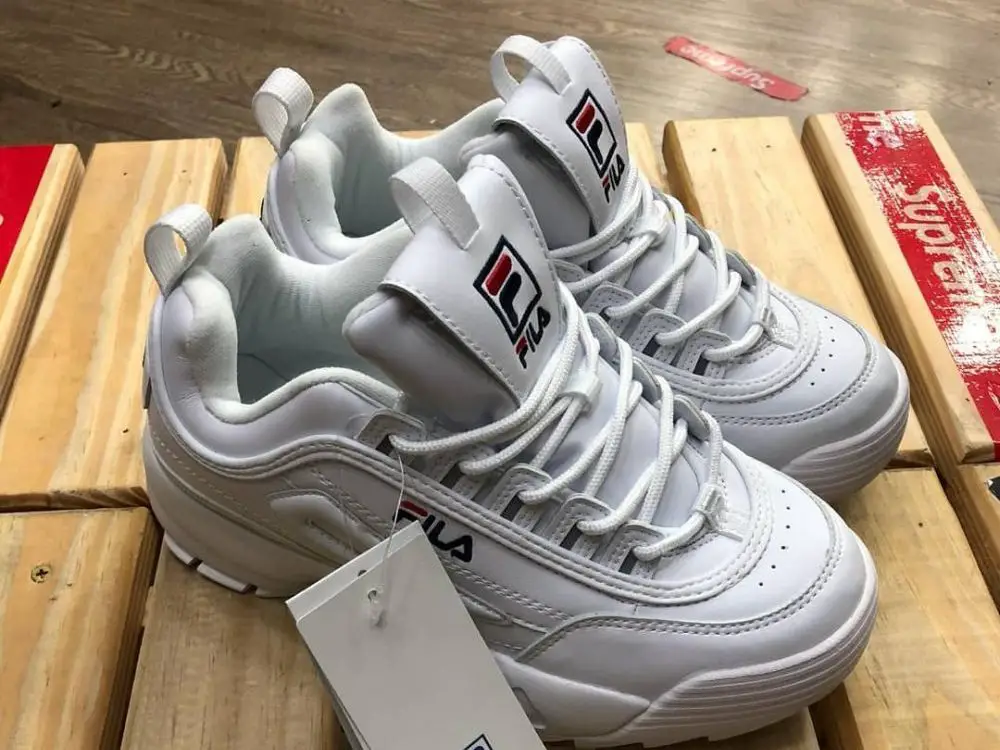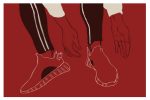By the end of 2019, the ugly shoe trend had reached a garish and clunky peak as “dad sneakers” took over Instagram, celebrity fashion, street style and fashion weeks around the world. Couture brands like Gucci and Louis Vuitton adopted the trend, adding baubles and logos to the already-gaudy sneakers.
Missy Elliott spearheaded the clunky shoe movement long before Billie Eilish ever wore her first pair; Bella Hadid and Kendall Jenner regularly sported the look; influencers all over the world tried their hand — or foot — at bulky Fila Disruptors and Balenciagas. Some of these shoes came with price tags of hundreds — and sometimes thousands — of dollars.
https://www.instagram.com/p/B8D6iesISQ3/
But this is not the first marker in the ugly shoe timeline. Before now, Dr. Martens have had several periods of high popularity, serving as a staple for grunge and punk movements alike. Today, the style has spread: The popular YouTuber Emma Chamberlain is a fan of the shoe, and Urban Outfitters now sells the boot. Birkenstocks have seen massive popularity with hippies and VSCO girls alike.
Crocs made their surprising comeback last year, and celebrities like Ruby Rose and Post Malone debuted Croc collaborations that sold out in minutes. Yeezys retail for hundreds of dollars and sell out quickly, before being resold online at a higher price. Uggs were at the forefront of the “basic” movement and serve as an unpleasant reminder — for most young adults — of our middle school experience.
The origins of some of these shoes are rooted in comfort and practicality, not style. Birkenstocks pioneered the first flexible insoles for better arch support; Dr. Martens were created by a soldier with a broken foot who wanted a more comfortable work boot to aid his recovery; Crocs found its original niche with nurses, cooks and other workers who were on their feet all day and swore by the non-slip grip and comfortable springy soles; dad sneakers, as the name implies, were popular with middle-aged dads, a group infamous for valuing comfort and function over appearance. The history of ugly shoes makes sense from a practical standpoint, but it also makes their development as everyday style a little less straightforward and a little more of a head-scratcher.
The rest of the stylized world has taken a much different approach. Modern-day websites, clothing, interiors, tattoos and other areas ruled by design embrace principles of minimalism and sleeker aesthetics; neutrals, consistency, balance and visual lightness are all hallmarks of this movement.
With their odd contours, unnatural shapes, bright colors and clunky soles, the rise of the ugly shoe defies these principles, creating a bold mark on the surrounding white-walled, minimalistic and aesthetically-pleasing landscape. It would be a surprise to hear Marie Kondo say that a pair of Fila Disruptors sparked joy.
https://www.instagram.com/p/B8mGk_hgqVa/
In contrast, ugly shoes are like a real-life colorful Buzzfeed quiz; each shoe reveals something to us about the wearer, about who they want to be, about who they think they are. We have created our own stereotypes about who wears which kind of shoe: a dark and edgy Dr. Marten person, a quirky Croc person, a basic-Starbucks-drinking Ugg person, an effortlessly cool dad sneaker person, and so on.
Fashion, in general, is a vessel for self-expression (in grade school, this was our battle-cry against any talk of school uniforms). So it’s not entirely unreasonable that we sort people into our own constructed factions or sub-groups; we’ve been doing that since before we watched “The Breakfast Club,” where common archetypes clash and interact.
This is echoed by the fact that most ugly shoe-owners generally don’t own every ugly shoe; the core vibe of each shoe is just so different from one to the other that it would be hard for someone to have a consistent style and wear them all. If someone out there does have the full collection of ugly shoes in their closet, consider yourself a scientific anomaly (in the best way possible).
The inherent and perceived boldness of the ugly shoe could be the underlying appeal of this seemingly outrageous footwear. The pervading obsession with being different and declaring your individuality in the very real face of anonymity might be enough to tip people over the edge in favor of making such a bold fashion move; perhaps in our desperation for individuality, we overlook the ugliness of a shoe, and when confronted about it, we can fall back on the age old, “But they’re so comfortable!”
Ideally, wearing a pair of these ugly shoes makes you a walking billboard of your own boldness, of your own audacity, of your own nerve. Ugly shoes are a challenge; if you can successfully pull off something as absurd and gaudy as an ugly shoe, you can pull off anything, and therefore, you join the ranks of the effortlessly fashionable. Ugly shoes are irony in the face of beauty, a deliberate thumb to the nose to tradition and expectation, and any notion of art. Ugly shoes are optimism that we can overcome our insecurities and be that cool person we’ve always wanted to be. Ugly shoes are postmodern, suspicious of the status quo.
And sure, it must be noted that beauty is in the eye of the beholder, but most people can agree that these shoes aren’t pretty — they’re fashion. High fashion, even. And sometimes, oddly enough, fashion isn’t pretty. These shoes are no stranger to runways or name brands, and they mirror the increasingly more garish, absurd and ironic direction of high fashion, with its meme-able and confusing outfits.
High fashion has gotten notoriously weird, and it rarely makes sense to us, which seems to be the point — life imitates art. Perhaps, on some level, fashion says to us, “no, this outfit doesn’t make sense, but neither does the world right now, and this is how we’re coping with it.” That’s not to say that ugly shoes are necessarily bad or good. They’re just a reflection of our own outlook on the world.















